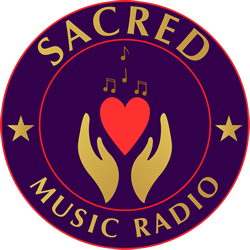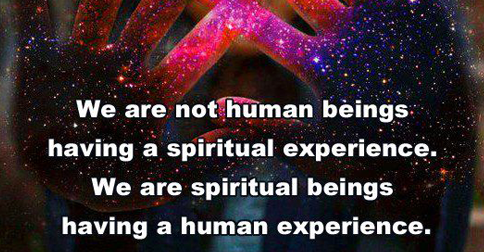Music is a significant part of almost everyone’s lives. It can uplift us, help us to relax; it can be appreciated for its aesthetic appeal, its technical accomplishments or simply for the ‘feeling’ it produces on listening. We all listen to different music at different times and for different reasons, but most importantly we all listen. Most music doesn’t come to us from strings and skins, it comes to us through the radio, from our players, from the internet. The ease of transmission allows almost everyone to experience the beneficial effects of music like healing vibrations.
Check out the Healers Journal Collection of Powerful Spiritual Sound Healing Music Here: Sound Healing Collection
And these effects extend far beyond the appreciation of music as art. Healing Vibrations or Music is effective as a tool for healing and self-development, having a long history of use in this way which is increasingly supported by contemporary studies. The enjoyment we get so readily from music can elevate our mood and increase our happiness, even proving effective in the treating of depression. Music – especially fast, high energy music – can also help us to perform better in high pressure situations, giving us a more positive outlook, helping us to focus on strategies and solutions and assisting us in getting excited rather than anxious. Music can even improve memory, especially verbal memory. These effects were observed during the treatment of stroke patients, whose verbal memory recovery was enhanced by the use of music compared to silence or audiobooks.
Fairly well known is the power of music to reduce heart and breathing rates and blood pressure. This is connected to a reduction in the level of cortisol (often termed ‘the stress hormone’) in the body. Noted time and time again, this effect was reported, for example, at the Massachusetts General Hospital, where it was observed that patients confined to bed who listened to music for thirty minutes had lowered stress symptoms and were in less apparent distress than patients who didn’t listen to music. Music (that the listener enjoys) can even ease physical pain.
Music can also enhance our relationships with our bodies, motivating us to exercise harder and for longer and improving muscular and cardiovascular recovery and growth afterwards. This can be explained in part by the fact that listening to music can improve blood flow, increasing the availability of oxygen and glucose and thereby increasing energy levels and promoting muscle fibre regeneration. Music can also protect the immune system by maintaining lower levels of cortisol.
The use of music in therapeutic settings has been extensively explored and its beneficial effects well established. To give a few examples: Ventre’s (1994) case study showed how healing vibrations built up an environment of love, acceptance and trust for a patient attempting to recover from sexual abuse and suffering from Post Traumatic Stress Disorder (PTSD). McCaffrey (2008) found that music connects individuals with their emotions and self-awareness, creating a healing environment. Perruzza & Kinsella (2010) found that healing vibrations therapy transformed their patients’ lives: empowering them, giving them a renewed sense of self, a means of expression and a sense of purpose which transformed the illness experience.
But the therapeutic qualities of music are fairly recent rediscoveries in medical science; the practice of musical healing vibrations predates Classical history, and has been kept alive in the world’s spiritual traditions. In Sufi culture, for example, music is still used as a tool for personal and spiritual purification and development. The tradition emphasises the use of dance, and Mevlevi practitioners or ‘dervishes’ engage in a repetitive whirling dance, attempting to reach Kemal, the source of all perfection, by listening to the music vibrations while attempting to abandon their egos and personal desires and focus on God. Of the Sufi’s, scholar and founder of The Sufi Order in the West Hazrat Inayat Khan says that “They have the power of wonder-working, and the power of insight.” Calling the dervishes “dreamers, and lovers of God.”, Khan points to the way in which “they worship God in nature, especially in human nature.” He suggests that Dervishes are those Sufis who are most receptive to the spirit and the soul: resonating with the music on a spiritual level, ‘feeling’ the music more deeply than the average listener. “Whoever among them is moved by spirit may manifest the ecstasy, which is called wajad, in the form of tears, sighs or dance,” Khan informs; “It is therefore that those who do not understand the meaning of their dance call them “howling dervishes”, or “dancing dervishes”.” Deeply concerned with direct emotional experiences and with the ultimate emotional experience of ecstasy, Sufi worship contrasts sharply with the quiet, reflective, controlled liturgy typical of Western traditions.
Hindu culture emphasises the importance of music in a very different way, focusing on refining and mastering the emotions as opposed experiencing them as directly and intensely as possible. Hindu traditions have produced broad and complex systems of mantras, which are intended to have healing qualities. Lacking any definable melody, these mantras are not songs, nor are they valued for aesthetic purposes. The qualities of the sounds and rhythms of these mantras, however, are highly valuable in Hindu culture for their perceived functional purpose. Generally speaking, single syllable mantras are repeated in order to free an individual from restraints or frustrations, whereas phrased mantras tend to relate to the specific cure of an ailment.
Mantras are believed to function through the pineal gland, highlighted by the widespread usage of bindis (red dots worn on the forehead in many South Asian countries), which symbolizes the importance of the pineal gland or ‘third eye’. The parallel with modern medical science is interesting, given that biology currently understands the pineal gland to release the serotonin-derived hormone melatonin, which is responsible for regulating our sleep patterns. In ancient Hindu practices we see an implicit understanding of some aspects of modern biopsychology.
It might even be the case that the combination of the personal benefits of music and the history of use in spiritual traditions affords spiritual music a particular power which reaches beyond its personal or cultural context and establishes a powerful resource for intercultural dialogue. Music may represent a way for us to explore the distinctions and similarities which have evolved as our cultures have developed. It may help us to better understand the experiences of others, to respect and celebrate our differences and discover the depth of those often unexpressed elements of human life which are of critical importance to all of us, healing divisions in our societies.
The way in which sharp distinctions between cultures are perceived is often viewed as the source of misunderstandings and failures of cooperation; the misleading view of fundamental difference can shut down the possibility for reasoned discussion. Divisive cross-cultural issues can be difficult to fully understand because the principles on which these issues are based are so often deeply held and ancient. This failure of understanding typically results because individuals have no real access to or understanding of the causes of these unfamiliar principles.
Just as listening to music from unfamiliar genres can help us to understand the ‘scene’ associated with that genre, so too can listening to music from spiritual traditions give us a greater understanding of that tradition’s culture. Listening to music from a specific cultural group can give a powerful insight into the direct emotional experiences of belonging which are associated with being part of that group. Experiencing the passion of the performer and appreciating the context of that passion can help us understand important and intimate parts of other people’s personalities and can help us to appreciate that the principles which sometimes divide us as are only cultural insofar as they are also personal; the importance of any given belief is its relationship to every individual who holds it, and its cultural significance is the way in which it brings them together.
Often people are unwilling to discuss important issues cross-culturally. We seem to expect total stubbornness when debating matters of religious importance. Frequently deeply held principles being explored by another group is interpreted as an hostility. There is perhaps a perception of an attack on those principles which define an individual’s relationships with their community.
The connecting effects of music healing vibrations – especially music from spiritual traditions – may help us to see the way forward in these important and often troubled cross-cultural debates. Music healing vibrations may help us to commit to resolution-focus discussions of our most notable cultural and religious differences which aim at framing principles and practices in the context of an international community, in which cultures are seen not as divided but as similar and separate parts of a wider global culture. Music can bypass the doctrines and dogmas which so often divide us, helping us to access a common spiritual awareness and creating an atmosphere of respect and appreciation.
Spiritual music healing vibrations – after decades of relative obscurity – is enjoying strong representation once more. Ventures such as internet radio station Sacred Music Radio are making this form readily available to the world: playing music from a wide variety of spiritual traditions and from performers associated with no particular tradition.
In this atmosphere in which the importance of understanding the legitimacy of other cultural positions is seen as primary, we can avoid the problems of resistance or defensiveness which often result in deadlocks; rather than perceiving e.g. an inquiry as to the ethical viability of a certain practice in our own culture as a challenge to the principles which reside at the core of our cultural identity, we can appreciate that our core cultural values are acknowledged are respected, that the inquiry is legitimate, focused and needn’t be considered differently from any other ethical question. This place of understanding and respect is a ground for resolution and coherence, in which cultures – just like individuals in a society – work together to achieve the common goals of peaceful cooperation and mutual enrichment.
You can find out more at sacredmusicradio.org



